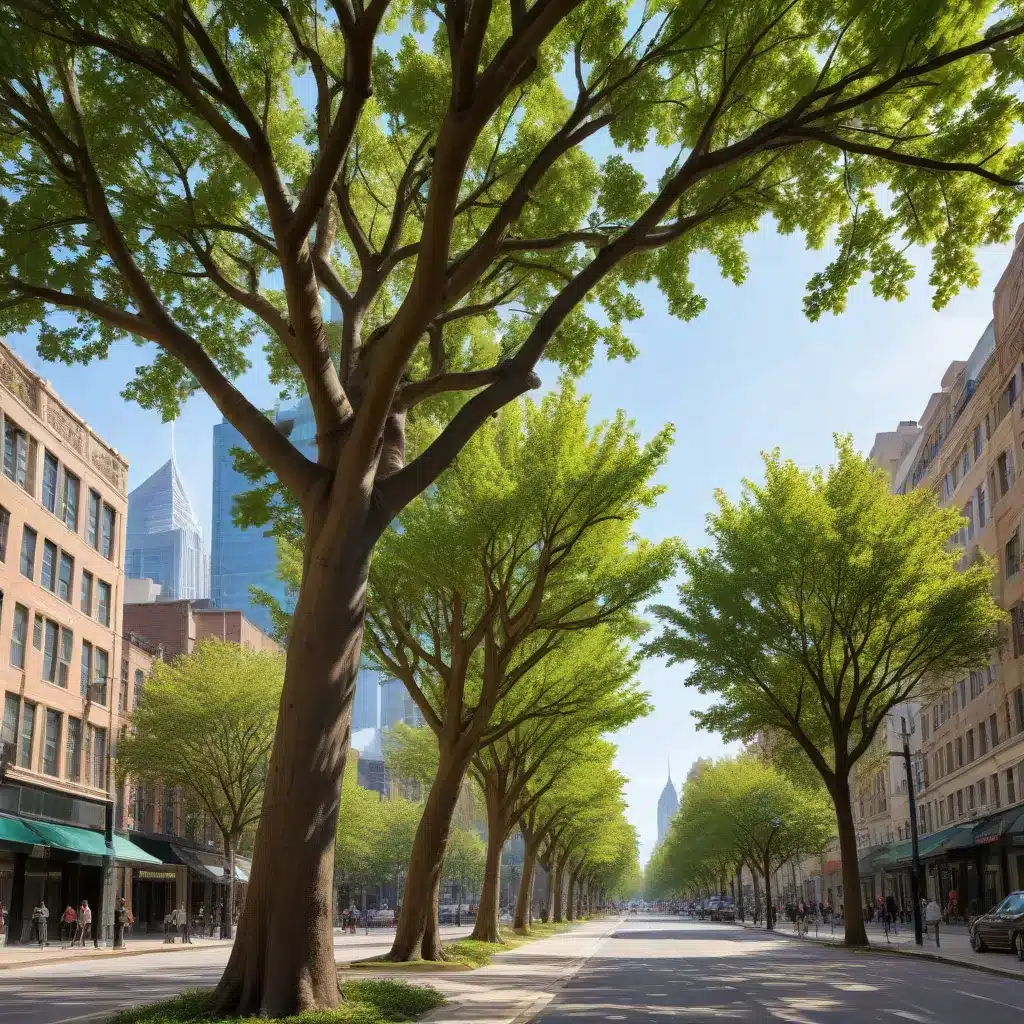
The proliferation of technology has significantly influenced the state of urban tree canopies worldwide. Defined as the layer of leaves, branches, and stems of trees that cover the ground when viewed from above, urban tree canopies play a crucial role in the environmental health and livability of cities. However, the expanding technological footprint has introduced both challenges and opportunities for the preservation and enhancement of these vital green infrastructures.
Factors Influencing Urban Tree Canopies
Several environmental and anthropogenic factors shape the composition and coverage of urban tree canopies. Climate, for instance, dictates the suitability of certain tree species and their growth patterns. Regions with hotter, drier conditions may struggle to sustain robust canopies compared to temperate or humid climates. Equally important are soil conditions, which can limit nutrient availability and moisture retention essential for tree health and longevity.
On the human side, land use and urban development decisions have a profound impact. As cities expand, the competition for limited space often pits tree preservation against the demands of infrastructure, housing, and commercial growth. Careless planning can lead to the indiscriminate removal of established trees, fragmenting the urban canopy and compromising its ecological benefits.
Impacts of Technology on Urban Trees
The rise of modern technology has introduced both beneficial and detrimental effects on urban tree canopies. On the one hand, technological advancements have enabled more sophisticated monitoring and management approaches, empowering urban foresters to make data-driven decisions. However, the same technological progress has also exacerbated certain threats to tree health and survival.
Infrastructure Development
The construction of roads, buildings, and utility networks often requires the clearance of existing vegetation, including mature trees. The compaction of soil, disruption of root systems, and physical damage from heavy machinery can severely compromise the vitality of urban trees. Furthermore, the growing prevalence of underground utilities, such as fiber-optic cables and water/sewer lines, increases the risk of root damage during installation and maintenance.
Air Pollution
Emissions from vehicles, industrial facilities, and power plants contribute to the accumulation of air pollutants in urban environments. These pollutants, including particulate matter, ozone, and sulfur dioxide, can impair tree physiology, stunting growth, reducing leaf cover, and increasing susceptibility to pests and diseases.
Microclimate Changes
The widespread adoption of technologies like air conditioning and urban heat-trapping materials (e.g., concrete, asphalt) has led to the formation of urban heat islands – areas with significantly higher temperatures compared to surrounding rural or suburban regions. These microclimate changes can disrupt the delicate balance of temperature, humidity, and precipitation that many tree species require, leading to increased stress and mortality.
Technological Solutions for Urban Forestry
While the impacts of technology on urban tree canopies may seem predominantly negative, there are also promising innovations that can support their preservation and enhancement. Remote sensing technologies, such as aerial imagery and LiDAR, enable detailed mapping and monitoring of tree cover, species composition, and overall canopy health. This data can inform targeted management strategies and guide long-term planning efforts.
Furthermore, specialized urban tree management software has emerged, allowing city officials and arborists to track individual tree inventories, schedule maintenance activities, and optimize resource allocation. Automated irrigation systems can also help sustain the water needs of urban trees, particularly during periods of drought or extreme heat.
Environmental Benefits of Urban Tree Canopies
Despite the challenges posed by technology, the preservation and expansion of urban tree canopies remain crucial for maintaining the environmental health and livability of cities. These green infrastructures provide a wide range of ecosystem services that benefit both the natural and built environments.
Air Quality Improvement
Urban trees can filter air pollutants, capturing particulate matter and absorbing gaseous contaminants like ozone, nitrogen oxides, and sulfur dioxide. This air purification capability helps improve respiratory health and reduce the risk of associated respiratory illnesses.
Carbon Sequestration
As trees grow, they absorb and store atmospheric carbon dioxide, a primary greenhouse gas contributing to climate change. Urban tree canopies can thus play a significant role in climate change mitigation by sequestering carbon and reducing the overall carbon footprint of cities.
Urban Heat Mitigation
The shading and evapotranspiration provided by urban trees can help offset the heat-trapping effects of buildings, roads, and other impervious surfaces. This urban heat island mitigation not only improves thermal comfort for residents but also reduces energy demands for cooling and the associated emissions from power generation.
Biodiversity and Habitat Provision
Urban tree canopies offer vital habitat and food resources for a diverse array of wildlife, including birds, insects, and small mammals. By supporting urban biodiversity, these green infrastructures contribute to the overall ecological health and resilience of cities.
Challenges and Tradeoffs
While the environmental benefits of urban tree canopies are well-documented, the integration of these natural assets into the technological fabric of cities often presents complex challenges and tradeoffs.
Conflicting Land-Use Priorities
The competition for limited urban space can pit tree preservation against the demands of infrastructure development, housing, and commercial growth. Balancing these competing interests requires careful planning, stakeholder collaboration, and innovative design solutions that prioritize the coexistence of trees and technology.
Maintenance and Management Challenges
Maintaining the health and longevity of urban tree canopies poses its own set of challenges. Tree mortality, caused by factors such as disease, pests, and environmental stresses, can compromise the integrity of the canopy and necessitate frequent replacements. Additionally, the introduction of invasive species can disrupt the ecological balance of urban forests, requiring vigilant monitoring and management efforts.
Navigating these complexities requires a comprehensive, technology-informed approach to urban forestry that balances the needs of the natural and built environments. By embracing innovative solutions and fostering cross-disciplinary collaboration, cities can harness the power of technology to enhance and protect their vital urban tree canopies, securing a more sustainable and livable future.
To learn more about the latest advancements in urban tree care and management, visit TriCounty Tree Care.


